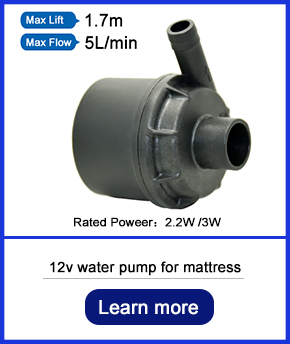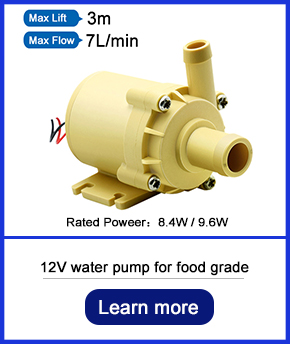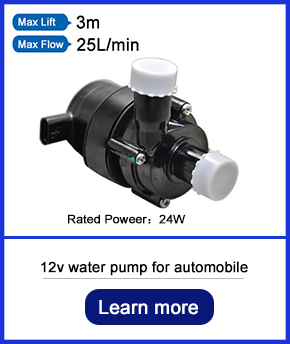Silent water pumps are widely used due to their high efficiency, energy saving, and long lifespan. However, noise has always been one of the key issues that need to be addressed in the use of silent water pumps. This article will explore the causes of noise generated by silent water pumps and the technical means to reduce noise.
 |  |  |
Reasons for noise generation
1. Motor design factors: The motor design of a silent water pump is one of the main sources of noise generation. Uneven air gap between the rotor and stator of the motor, as well as unreasonable magnetic circuit design, can all lead to the generation of noise.
2. Bearing issue: Bearings are key components in silent water pumps, and their wear or damage can directly lead to increased noise. Insufficient lubrication of bearings or improper selection of bearing materials are also one of the reasons for noise generation.
3. Fluid dynamics factors: When a silent water pump is in operation, the flow of fluid through the pump body will generate turbulence and eddies, which will increase noise.
4. Mechanical vibration: During the operation of a silent water pump, mechanical vibration is generated due to the imbalance of the motor, resonance of the pump body structure, and other reasons. These vibrations propagate through the pump body structure and are ultimately converted into noise.
5. Installation and usage environment: Improper installation of the silent water pump, such as unstable fixation or loose connection with pipelines, may lead to an increase in noise. In addition, environmental noise can also affect the noise level of the water pump.
Technical means to reduce noise
1. Optimize motor design: By improving the magnetic circuit design of the motor to ensure uniform air gap between the rotor and stator, noise caused by uneven magnetic field can be reduced.
2. Use high-performance bearings: Choosing high-performance bearing materials, such as ceramic bearings, can reduce friction and wear of the bearings, thereby reducing noise. Meanwhile, ensuring the lubrication of bearings and regularly replacing lubricating oil are also effective methods to reduce noise.
3. Fluid dynamics optimization: By optimizing the internal flow channel design of the silent water pump, the generation of turbulence and eddies can be reduced, which can effectively reduce noise. For example, adopting a streamlined impeller design can reduce fluid resistance and noise.
4. Reduce mechanical vibration: By using high-precision balancing technology, ensure the balance of the motor and reduce vibration. In addition, the use of shock-absorbing materials and structural design, such as rubber pads or spring suspension systems, can effectively isolate vibrations and reduce noise.
5. Improve installation and usage environment: Ensure that the silent water pump is securely installed, reducing vibration and noise caused by improper installation. Meanwhile, optimizing the usage environment, such as installing soundproofing materials around the water pump, can reduce the propagation of noise.
6. Intelligent control technology: Through an intelligent control system, the operating status of the silent water pump is monitored in real time, and the operating parameters, such as speed and flow rate, are automatically adjusted to reduce noise generation.
7. Use of sound insulation materials: use of sound insulation materials, such as sound insulation foam or sound insulation board, outside the silent water pump can effectively reduce the transmission of noise.
In summary, noise control of silent water pumps is a systematic project that requires comprehensive consideration and optimization from multiple aspects such as design, material selection, manufacturing process, installation, and use. By adopting the above technical means, the noise of the silent water pump can be effectively reduced, and its applicability and comfort in various application scenarios can be improved.
Address:No.30, Dapu lndustrial Street, Changping, Dongguan, Guangdong, China
Tel: +86-186 7628 8117